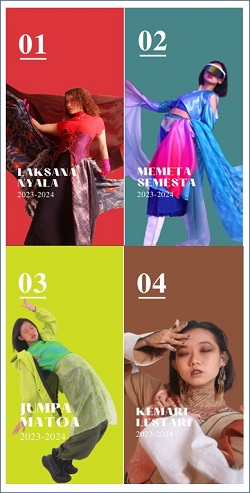PT Asia Pacific Rayon (APR) invites all textile and textile product (TPT) industry players to contribute in making the TPT industry roadmap. APR proposes that sustainable supply chains be the focus of the roadmap.
Director of PT Asia Pacific Rayon (APR) Basrie Kamba said that the era of information disclosure forces manufacturers to implement the principles of sustainability in all production chains and supply chains. Basrie did not deny that the principle of a sustainable supply chain would require a high investment.
"However, we have no choice. The future of the textile industry is like this. Consumers now no longer [only] see the country of production, but who are the producers and how the manufacturing process is," he said in the webinar "Symposium Towards Responsible Supply Chain".
Basrie stated that one of the ways his party implemented was to place QR codes on garment labels that use APR fibers. Basrie assessed that the upstream industry holds a big interest regarding the principle of sustainability in the national textile industry.
Basrie proposed that the government boost consumption of rayon in the country. Basrie noted that the consumption of rayon in the country tends to stagnate in the range of 300,000-400,000 tons per year, except in 2017, during 2014-2019.
Meanwhile, production of rayon fiber in 2019 penetrated the level of 700.000 tons, but consumption of rayon only reached 420.000 tons or 60 percent of the total fiber consumption in 2019. As a result, the excess production was allocated to the global market of around 300.000 tons.
Meanwhile, fiber consumption in 2019 is still dominated by cotton, up to 36 percent or 590.000 tons. However, consumption of polyester fiber is not much different, which is 35 percent or 582.000 tons.
"We and three other friends are quite large [installed capacity or around] 850,000 tons per year, [but] consumption is still 400,000 tin. This can be maximized," he said.
Basrie stated that one of the steps taken by his party in boosting national rayon consumption was establishing a kind of community, namely the Jakarta Fashion Hub. Meanwhile, APR educates designers regarding the characteristics of rayon fibers.
Basrie said the community can also order cloth in small quantities. As is well known, the minimum order for fabrics by small and medium industries (IKM) is an unresolved problem in the textile industry. **





